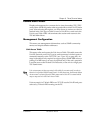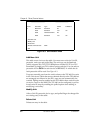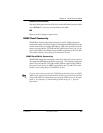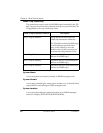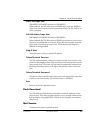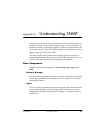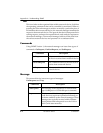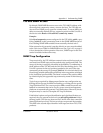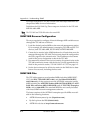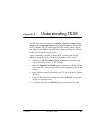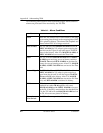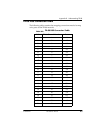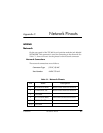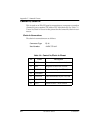
Appendix A. Understanding SNMP
61202076L1-1 TSU 600 User Manual A-3
TSU 600 SNMP ACCESS
By default, SNMP MIB Browser access to the TSU 600 IP address with
the configured community names, accesses the host. The TSU 600 can
also act as an SNMP proxy agent for external units. To access MIB vari-
ables on externally chained devices, append a period and the Unit ID of
the device to the Read and Read/Write community names.
Example:
If the Read community name configured in the TSU 600 is public, spec-
ifying
"public.3"
as the community name in the SNMP MIB Browser al-
lows reading SNMP MIB variables from externally chained unit 3.
If the external unit's passcode is not the default, an entry must be added
to the Unit Access Table for SNMP MIB access. See Figure 8-3 on page 8-
6 for a description of this operation. However, SNMP traps for the unit
can be forwarded without the entry.
SNMP Trap Configuration
Traps received by the TSU 600 from external units and the host unit are
converted into SNMP traps and forwarded to the configured NMS. The
source of the trap is uniquely identified at the NMS by a combination of
the IP address of the TSU 600, and the Unit ID of the sending device. The
Unit ID is present in the trap packet appended to the end of the trap
community packet name, for example public.4. It is also included as an
Octet String variable (adProdPhysAddress) in the trap packet as defined
in the individual product MIBs. The latest versions of the product MIBs
by default display the appended trap community name in their descrip-
tions.
Typical steps required for Management Station trap configuration are
loading the device specific MIBs and loading or creating device specific
Trap Definition Files. The current product MIBs contain keywords em-
bedded in comments that can be used by some network management
platforms to automatically generate Trap Definitions. Otherwise, the de-
scriptions may be used as a template for Trap Definitions.
If individual option card port identification and slot identification are
required, they are present in the four byte
adProdPhysAddress field of
the trap packet. The first two bytes are the Unit ID of the base controller
(least significant byte first). The next two bytes are port and slot number.
This field is the second object identifier in all traps sent from TSU/TDU
products.



